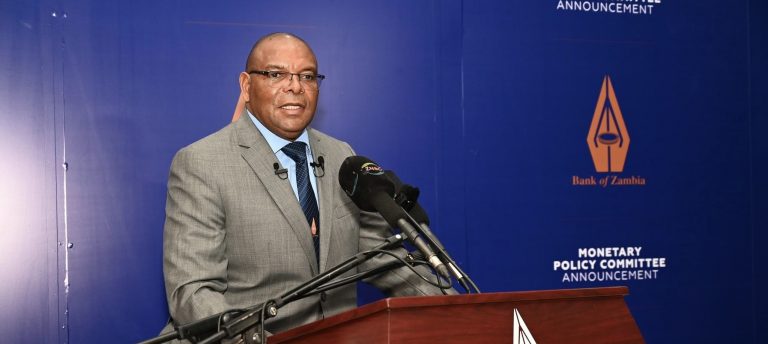The week beginning 12 May in Africa’s red metal hotspot, Zambia, has the market jittery around potential monetary tightening as the Kwacha extends its losing streak in the 27’s coinciding with deepening drought woes. The Bank of Zambia will seek to sell K2.6 billion in treasury assets a day after the rate announcement. Zambia ended last week with news around a growth forecast haircut to 2.3% on deepening drought concerns. Here as some of the key expectations in the week.
MONETARY TIGHTENING TO CURB NOTORIOUS FX RISKS BUT DROUGHT
Zambia’s central bank has commenced deliberations on its second rate decision meeting of the year today with Governor Dr. Denny Kalyalya expected to announce the decision on Wednesday 15th May. A weakening Kwacha currency flirting with all time lows does cement the case for another rate hike on both the cash reserves and the benchmark interest rates. Last monetary policy committee resolved to elevate the benchmark interest rate by 150 basis points to 12.5% barely a week and half after the statutory reserve ratio was widened by a 9% margin to 26%. This was in the quest to curb a depreciating currency. The sterilisation intervention did extended to government deposits and vostro balances. Expectations shared by various leading analysts, point to a 600 – 900 bps hike this week on stats while the benchmark interest rate could see anything between 150-200 bps upwards. Zambia’s monetary regulator faces a tough call in the wake of growth headwinds posed by worsening drought effects that is forecast to erode growth significantly. The International Monetary Fund in its third Extended Credit Facility halved Zambia’s 2024 growth forecast to 2.3%. A dissenting view by some market players is that the central bank may not temper with liquidity to assist with funding the budget gap needed to finance the drought cushion for which Zambia seeks K23 billion ($940 million).
KWACHA LOSING STREAK PERSISTS
Structural issues weighing supply in the foreign exchange markets continues to impact the currency pricing as rising demand persists. Muted mining remains the biggest driver of constrained supply that has sent the copper currency to an all time low of K27 for a unit of green back. Increased calls for urgent interventions to curb the slide have continued with commentators citing de – dollarisation legislation and reversal of a mining tax payment directive to settle obligations directly to the treasury have been raised as opportunities to stem the current slide. A few years ago, Zambian authorities directed the mines to channel tax payments in dollars directly to the treasury as they readied debt repayments for maturing bonds. This directive is said to have deprived the foreign exchange market of 55% of currency flows on the open market making the genesis of depreciation woes. In the week ending Friday 10 May, market players offloaded dollars ahead of anticipated rate tightening this week to hedge against losses. This has provided support to the currency seen starting Friday and part of Monday this week closing at levels between K25.7 and K26.2 per dollar.
WANED PURCHASING POWER IN TBILL AUCTION
The BOZ will seek to sell K1.8 billion worth of treasury bills in its Thursday 16 May auction. The risk skew observed in the market has been on the long end of the curve with more players taking longer term risk in view of the copper producers recovery prospects. The market has however been hit with a series of under-subscriptions reflecting liquidity hurdles and unattractiveness of yields given the foreign currency risks. Market analysts see bond yields at 30% given the Kwacha weakness and as such will price into decisions surrounding investing in bills or bonds. Not much purchasing power expected in this Thursdays sale given the overarching market dynamics.
POWER BOTTLENECKS DEEPEN
Drought woes continue to deepen with Zambia’s electricity rationing program covering 8 hours daily for multiple users. Dam levels at the Kariba continues to plummet and currently reside at 12% raising fears of generation shut down in a few weeks. Taking a negative cue from this is Zambia’s March private sector pulse shrivelled to 47.7 weighed by rising input costs on the back of currency depreciation. (PMI readings >50 reflect expansion while those <50 reflect contraction in manufacturing activity). Drought continues to impact agriculture and power generation.
The Kwacha Arbitrageur

